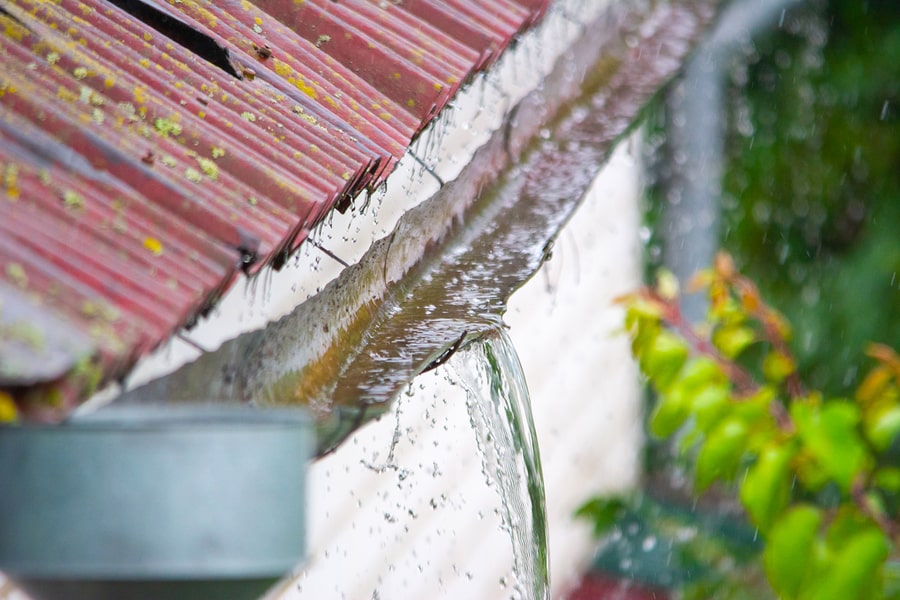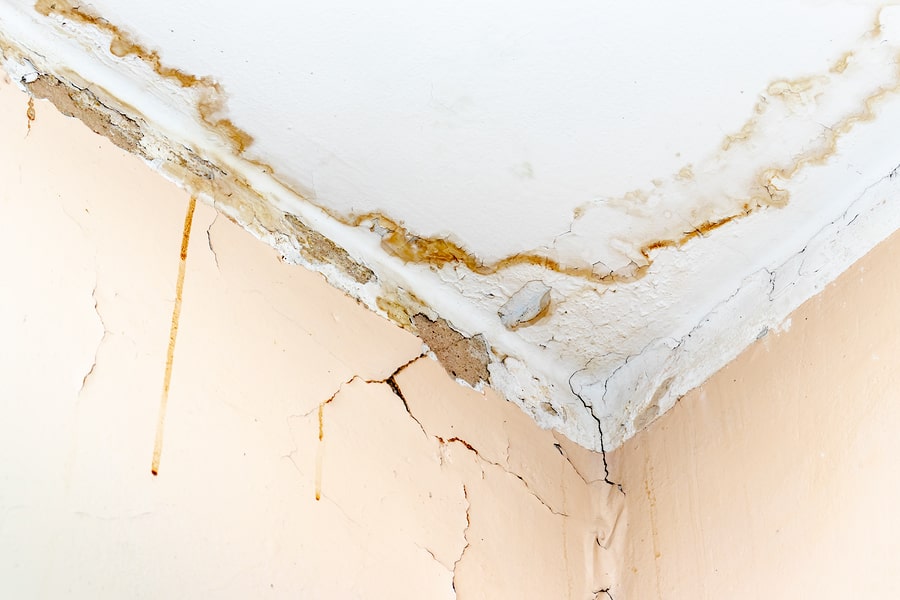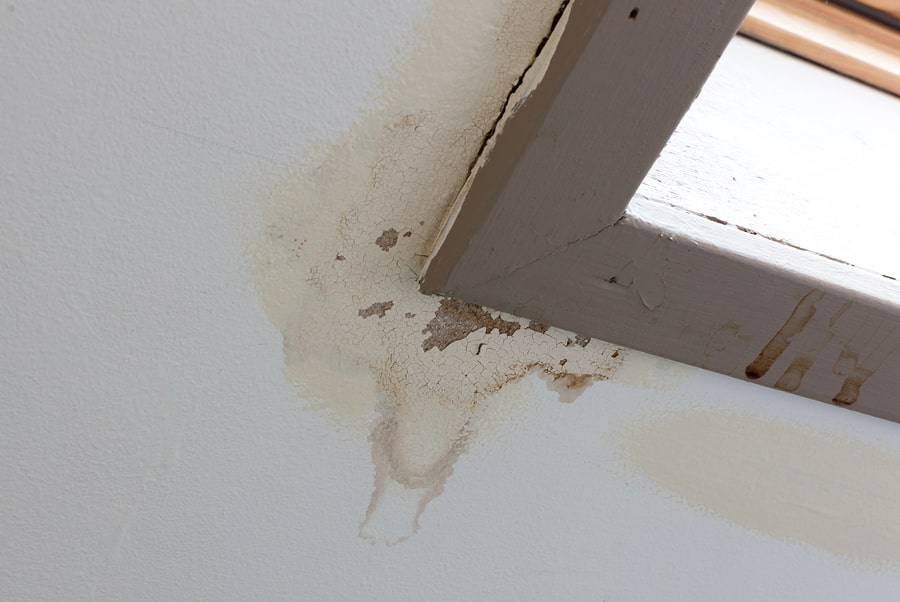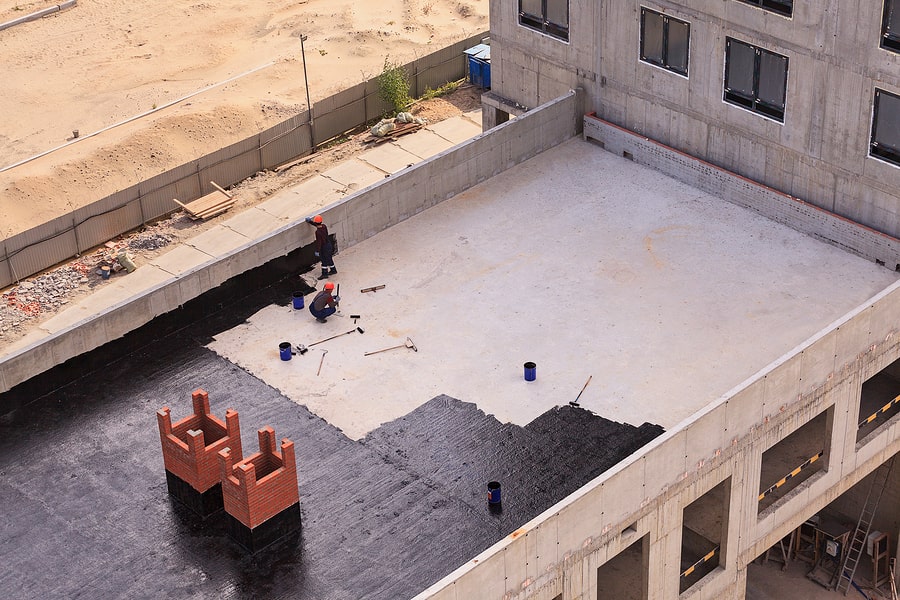01 Jan Is Reinforced Concrete Roofs Waterproof?

Reinforced concrete is known to have pores and capillary tracts, this makes them susceptible to water leakages. Moreover, they are also vulnerable to crack and void formations, thus increasing the chances of water seepage. Given their wide exposure to weather elements such as rain, professional waterproofing measures must be used to prevent leakages.
If you suspect that your RC roof is leaking then this article is for you. This article has been written to give an introduction to RC roof water seepage and waterproofing works.
How RC Roof Leaks Occur
Roofs are among the most susceptible areas of your home or office to water leakages. This is because they are exposed to the full blunt of both rain and wind. Furthermore, water is a highly mobile substance, capable of finding even the smallest of holes in your structure to enter though. This even includes gaps that are too small for the naked eye to see.
Depending on the quality of the initial designed strength, density and technique, the concrete material may have a varying number of pores. These pores are connected within the concrete roof, allowing water to travel with ease from one pore to another. This is also known as the osmotic effect where water flows with the help of capillary tracts.
As such, while water may only be able to enter through a single small gap, it can quickly full up internal spaces in the concrete.
Poor Fall Design
Fall designs refer to flow paths that are built to direct the drainage of rain water away from the roof and towards suitable discharge points. Its effectiveness is dependent on the speed at which it can clear surface water away from the roof to avoid ponding or stagnation.
Poor fall design will result in your RC roof being exposed to excessed amounts of water. This increases the chances of water seepage beyond the surface. Other than poor initial design, fall paths may become choked with debris over time. Such debris blocks the flow of water, thus forcing an accumulation of water on the roof.
Cracks & Voids
Concrete is inherently weak to tension which can be caused due to changes in the weather. For example, long exposure to the sun during the day leads to thermal expansion. Meanwhile, a sudden downpour of rain would lead to thermal shrinkage. The continual cycle of expansion and shrinkage causes cracks and voids to form.
Even if fall design is sufficient to minimize exposure to water bodies, roofs with cracks or voids will still suffer from some water seepage. Any trapped moisture in the concrete is subjected to temperature increases when the sun is out. This causes vapor to emerge and exert itself to all areas under the surface layer. If the vapor pressure is not released or vented sufficiently, the build-up in pressure will start to cause blisters on the foundation.

Typical Areas of Weakness in Your Building’s Foundation
Wall Cracks
There are 2 main types of wall cracks that occur in roofs. Firstly, horizontal cracks which occur due to pressure against the walls. Alternatively, vertical cracks which occur as the foundation ages. In both cases, it is due to the concrete shrinking as it cures, thus allowing a crack to form.
Mortar Joints
A mortar joint refers to the area between any concrete blocks or bricks that is sealed with mortar. Over time, cracks can be formed in the mortar due to unseen foundation movement. Such cracks allow water to seep through.
Window Well
If your roof features see through windows, then it too may suffer from water leakage. A roof window is designed to allow both light and air into the building. However, during heavy rains, water can accumulate within the window well. This leads to a building up of pressure and eventual water seepage through any cracks or gaps around your roof’s window.

Checking Your Roof For Water Seepage
To check your roof for signs of water seepage, follow our 6 step guide:
- Look for drips of water forming on your ceiling or even on your walls. Additionally, keep an eye out for peeling paint or a dulling of its original colours.
- Take a piece of aluminum foil and tape it to the inside of your ceiling. Leave it for 24 hours and check it thereafter for condensation. If the foil is found to have condensation on the wall facing side, then soil around your home may be near its saturation point.
- Check for cracks in your roof. If you do spot any, as a temporary solution, you could apply a layer of epoxy to seal up the crack. This DIY solution should slow down any leakage till you can engage a waterproofing contractor to assess the situation.
- Assess the condition of your gutters surrounding your roof. Gutters can be a huge part of the problem as they actually trap water when debris choke them. Consequently, pools of water are formed, leading to a high chance of water seepage.
- Observe if water is being diverted away from your roof along the designated fall paths. Additionally, check if any of these paths have been obstructed by debris.
- Engage a specialist waterproofing contractor to add layers of waterproofing both internally and externally to your roof.
How is Waterproofing Done For Basements
As alluded to before, two main types of waterproofing methods exist for roofs – interior and external waterproofing.
Interior Waterproofing Methods
To waterproof your roof on the interior, you can first start by applying concrete waterproofing coatings. These coatings are similar to that of cement, and will stick permanently to concrete or masonry walls. However, a limitation exists in that they cannot be applied to previously painted surfaces.
An alternative to concrete waterproofing coatings is that of silicate based concrete sealers, otherwise known as densifiers. This solution chemically reacts with concrete or bricks to form a hard and waterproof surface. Unfortunately, it too cannot be applied to surfaces that have already been painted.
If your surface already has an existing layer of paint, then try applying waterproofing paint. Water proofing paint is an acrylic formula that can be brushed, rolled or sprayed quickly over a surface.
Plastic sheets and panels do help with waterproofing when used in combination with existing interior basement drainage systems. Unlike the previous 3 solutions, they do not stop water from penetrating but they do stop constrain it to the designated drainage area. When water successfully penetrates through your roof, the plastic leads it to the drainage path instead of allowing to travel onwards to other areas of your basement.
It should be noted that none of these solutions work unless all cracks and gaps have been properly sealed beforehand. If cracks and gaps were to exist, the rate of water seepage would be sufficient to overcome these solutions.
Exterior Waterproofing

The surest method of waterproofing your roof would be to engage professional waterproofing contractors to carry out a full-scale exterior waterproofing solution.
This involves the proper application of waterproofing membrane systems. A waterproofing membrane is a material that can be applied thinly over an area of surface. It can repel and prevent water from entering surfaces.
A basic application of a waterproofing membrane is to spread it across the foundation of a building. This is done to reinforce the supporting structural blocks of the building by preventing water from damaging the property.
Trust TAC Contracts for Your Waterproofing Needs
TAC Contracts is an established and trusted waterproofing and repainting contractor. Over many years we continuously provided our customers with high-quality workmanship at very reasonable prices.
Our experienced contractors and specialists can help you in identifying, analysing and resolving your waterproofing issues. We use high quality waterproofing materials and recommend the appropriate waterproofing membranes for your building.
Enquire about our roof waterproofing Singapore services today.





Sorry, the comment form is closed at this time.